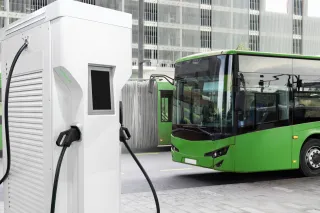“It’s an amazing feeling when you're sitting in a robot car, and the steering wheel begins to turn by itself while the car is making independent decisions on whether to slow down or drive on! It feels as if there was another person standing by your side, making the driving actions. The car becomes like a human companion.”
Our first robot car, Marilyn, shot into the limelight in 2017, followed by the robot car Martti soon after. Where Marilyn is an automated vehicle designed for urban environments, Martti navigates roads in rural areas. What differentiates this couple from ordinary cars is that they can hear and see. Their sight is provided by different kinds of sensors, and for hearing they use various communications tools, enabling the cars to interact with each other while driving.
Martti is also a world-record holder and international celebrity. In the snowy northern conditions, Martti successfully drove at the record speed of 50 km/h on a road without lane markings, attracting international attention and even foreign visitors from U.S.
Researcher Matti Kutila has been on the road with Martti and Marilyn since the very beginning. The R&D began more than 20 years ago with the automation of mobile machinery. Over time, the research team members developed a personal passion and drive to create a robot car. The process was kicked off simply by purchasing a car and components directly from a hardware store.
The team set a clear vision:
We’ll perform a left-hand turn at an intersection, which no one has succeeded in yet. And from there the portfolio then started to grow.”
We are still advancing towards this goal, one step at a time – in fact, the whole research project is centred around very smalls steps, in the right direction. The world goes around in circles, and even the same discoveries are often made over and over again, but in a better form.
Robot cars are also more than just a fun luxury gadget of the future – they have a bigger meaning than that. In traffic, the biggest risks derive from human errors. Automation is used for providing safety, smooth flow of traffic and comfortable mobility, while minimising human error. On the other hand, the unpredictability of human beings is one of the major difficulties with a view to fully automated driving. Automation would be a simple thing if everyone involved were robots – human behaviour and unpredictability constitute a challenge.
Therefore, for Kutila, automation is an eternity project – a never ending story, as he personally describes it. There is always a new problem to solve behind the corner. Currently, the research team is focusing on the challenges created by weather conditions. Even though full automation is still far away in the future, some major leaps can already be expected in the near future, such as cars driving to park themselves automatically, or people performing their work duties during their commute from Tampere to Helsinki with the car driving itself. However, it is quite clear that we are moving towards such a future at a very high speed, and the fully automated cars we see in Hollywood movies may no longer be a totally utopian idea.





